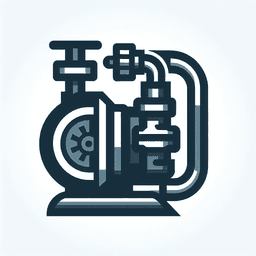
Bilge Pump: Definition, Uses, and Examples
January 16, 2025
Bilge Pump
A bilge pump is an essential piece of equipment on any vessel, designed to remove water that has accumulated in the bilge, the lowest compartment inside the hull of a ship or boat. This water can enter the bilge through leaks, rough seas, or even condensation, and if not removed, it can affect the vessel's stability and buoyancy.
There are several types of bilge pumps, including manual, electric, and automatic pumps. Manual bilge pumps require physical effort to operate, making them a reliable backup in case of power failure. Electric bilge pumps are powered by the vessel's battery and are more efficient for larger volumes of water. Automatic bilge pumps are equipped with a float switch that activates the pump when water reaches a certain level, providing convenience and peace of mind for sailors.
For maritime users, maintaining a functional bilge pump is crucial for safety. Regular checks and maintenance ensure that the pump operates effectively when needed. It's also important to have a backup system in place, as bilge pumps can fail due to clogging or electrical issues.
In addition to removing water, bilge pumps help prevent the accumulation of oil and other pollutants in the bilge, which can be harmful to the marine environment. Therefore, sailors should ensure that their bilge pumps are compliant with environmental regulations and equipped with oil filters if necessary.
Overall, a bilge pump is a vital component of a vessel's safety equipment, providing essential protection against flooding and helping to maintain the vessel's integrity and performance at sea.
Understanding Bilge Pumps: Essential Information for Maritime Users
Bilge pumps are crucial components in the maritime industry, designed to remove water that accumulates in the bilge, the lowest compartment inside a ship or boat. This is essential for maintaining buoyancy and preventing water damage to the vessel.
Common Questions About Bilge Pumps
What is the purpose of a bilge pump?
A bilge pump is used to remove bilge water from the vessel. This water can accumulate from leaks, rough seas, or even condensation. By removing this water, bilge pumps help prevent the vessel from becoming waterlogged and maintain its stability and safety.
How do bilge pumps work?
Bilge pumps operate by using a motor to create suction, drawing water from the bilge and expelling it overboard. They can be manual or electric, with electric pumps being more common in modern vessels due to their efficiency and ease of use.
What types of bilge pumps are available?
There are several types of bilge pumps, including centrifugal, diaphragm, and manual pumps. Centrifugal pumps are popular for their high flow rate, while diaphragm pumps are known for their ability to handle debris-laden water. Manual pumps are often used as backups in case of power failure.
How do you maintain a bilge pump?
Regular maintenance of a bilge pump includes checking for blockages, ensuring the pump is securely mounted, and testing the pump's operation periodically. It's also important to inspect the electrical connections and replace any worn-out parts to ensure reliability.
Why is a bilge pump important for maritime safety?
Bilge pumps are vital for maritime safety as they prevent the accumulation of water that could compromise the vessel's buoyancy and stability. In emergency situations, a functioning bilge pump can be the difference between staying afloat and capsizing.
By understanding the function and maintenance of bilge pumps, maritime users can ensure their vessels remain safe and operational in various conditions.




